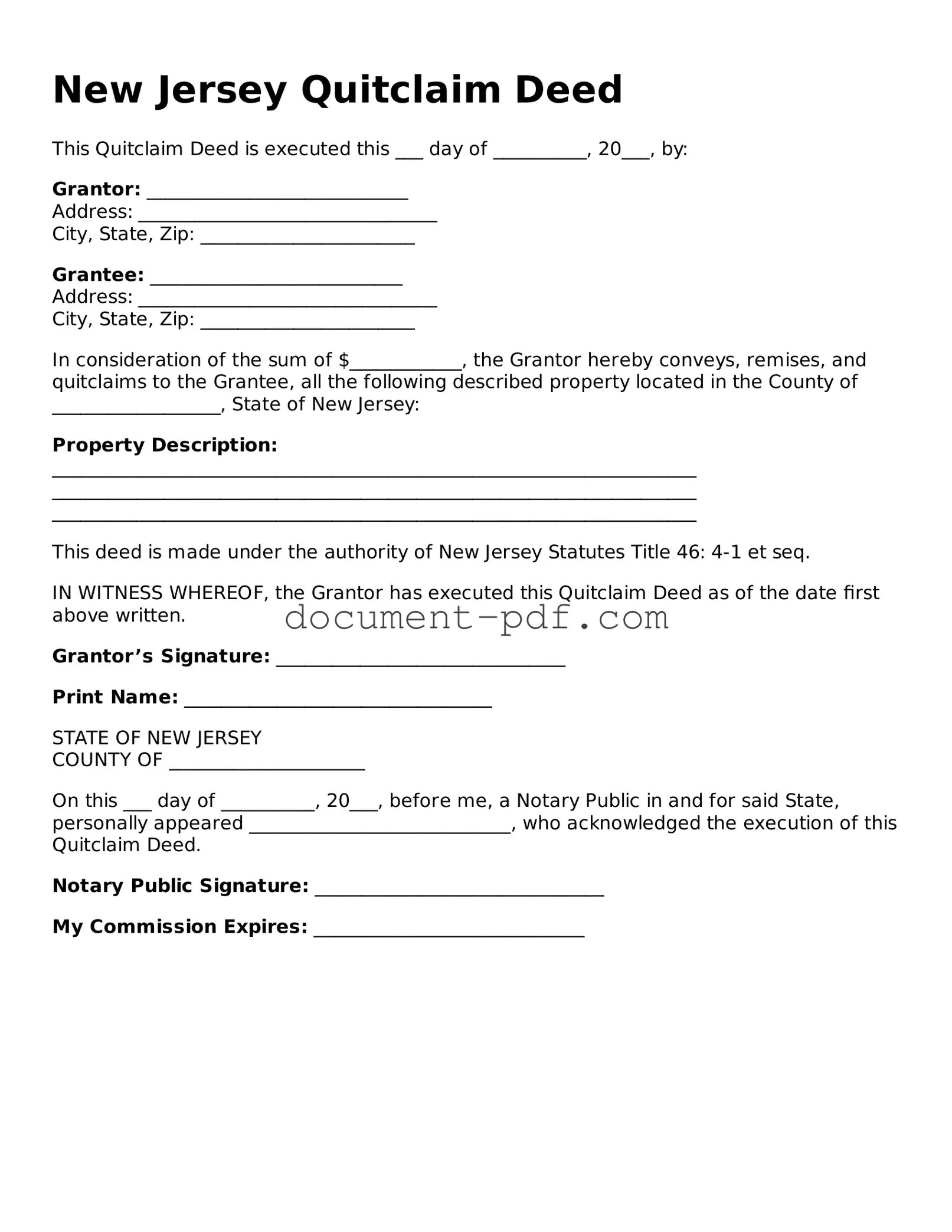New Jersey Quitclaim Deed
This Quitclaim Deed is executed this ___ day of __________, 20___, by:
Grantor: ____________________________
Address: ________________________________
City, State, Zip: _______________________
Grantee: ___________________________
Address: ________________________________
City, State, Zip: _______________________
In consideration of the sum of $____________, the Grantor hereby conveys, remises, and quitclaims to the Grantee, all the following described property located in the County of __________________, State of New Jersey:
Property Description:
_____________________________________________________________________
_____________________________________________________________________
_____________________________________________________________________
This deed is made under the authority of New Jersey Statutes Title 46: 4-1 et seq.
IN WITNESS WHEREOF, the Grantor has executed this Quitclaim Deed as of the date first above written.
Grantor’s Signature: _______________________________
Print Name: _________________________________
STATE OF NEW JERSEY
COUNTY OF _____________________
On this ___ day of __________, 20___, before me, a Notary Public in and for said State, personally appeared ____________________________, who acknowledged the execution of this Quitclaim Deed.
Notary Public Signature: _______________________________
My Commission Expires: _____________________________
